
Route d'Argentière
Modern ski hire shop ideally located between Grands Montets ski area and Chamonix. Save time and money by booking online with Intersport. Have your equipment ready to pick up as soon as you arrive and hit the slopes straight away!
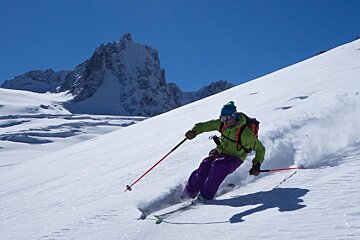
© Tim Oliver
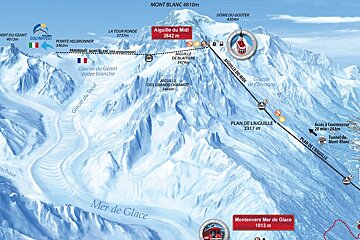
© SeeChamonix.com
Infamous glaciated, unpatrolled ski itinerary accessible from the heart of Chamonix
The Vallée Blanche starts at the top of the Aiguille du Midi and finishes in Chamonix’s town centre (snow permitting). It’s an unmarked, unmaintained and unpatrolled high mountain off-piste ski itinerary which offers some of the most spectacular scenery that the Mont Blanc range has to offer.
The Aiguille du Midi cable car is the starting point for this popular route. Generally, the lift company operates a number system where you can pre-book your cable car in advance. This is highly recommended if you want to avoid an unpredictable and possibly long wait on a busy day. A Mont Blanc Unlimited pass covers the Aiguille du Midi lift.
The numerous Vallée Blanche routes start at the top of the Aiguille du Midi (3,812m) where after exiting the ice tunnel you're straight onto the ‘arête’. This is potentially one of the most dangerous points of the route - essentially a ridge edge which has a 50-degree pitch on both sides. In high season, a safety rope is placed along the descending path and steps are usually cut into the slopes, but it's still pretty intimidating knowing a safety rope is all that there is between you and the pea-sized buildings of Chamonix town centre.
There are four main Vallée Blanche routes. The classic route ‘voie normal’ is fairly straight-forward providing you are following the advice of your hired guide. The route can be fairly busy during high season. The other routes are known as Le Vrai Vallée Blanche, the Petit Envers du Plan and the Grand Envers du Plan. These latter routes are technically more challenging and involve couloir skiing so are for more experienced skiers.
If skiing the ‘voie normal’ after descending the arête, the route heads to the right of the large rock outcrop known as Le Gros Rognon (‘the big rock’). Along the descending route you will see large séracs, crevasses and ice falls which are pretty impressive sparkling away in various shades of icy blue from the winter sunshine.
Most people make a day of the trip and for many it's the highlight of a skiing trip to Chamonix and they want to enjoy it. If you allow for regular breaks and a bit of sightseeing on the way down you will probably take between four and six hours for the round trip from Chamonix. Don’t forget that queues can be long for the Aiguille du Midi télépherique, the arête from the Midi to the glacier, and for the return train from Montenvers.
A popular pit stop for lunch on the Vallée Blanche is the Requin refuge. A number of skiers also tend to stop at the ‘Salle à Manger’ beneath the séracs. These large ice structures can collapse at any time so it's best not to hang around. If you don't want to carry food with you there is a café at the top, at the Aiguille du Midi and at the bottom, at Montenvers.
The route at the end of the Vallée Blanche really favours skiers as it has a long flat run out which can be tricky for snowboarders to keep moving. During the spring it gets pretty slushy too, so it's recommended that snowboarders take a pair of telescopic poles to push themselves along. In good snow conditions you can ski all the way back to Chamonix’s town centre; if not then the best way down is via the gondola and the Montenvers train.
A guide isn’t compulsory for the Vallée Blanche, but if it’s your first time or you’re not confident on glaciated terrain, it’s strongly advised. Local guides know every route, can keep you safe in poor weather, and greatly reduce the risks involved. Most importantly, they’re trained to deal with emergencies should anything go wrong. For most holiday skiers, hiring a guide ensures a safer, smoother, and more enjoyable descent.
Conditions vary hugely, and at times a firm base makes it feel like a blue or red run, whilst deep powder, crust or icy moguls can turn it into a black-level challenge. Generally, confident red-run skiers can manage the easiest routes. Hiring a guide is a real bonus, as they’ll judge the snow, pick the safest line, and match the descent to your group’s ability for a smoother experience.
When skiing on a glacier, you’ll need a harness, ropes and rescue gear, plus the knowledge to use them for crevasse rescue. Everyone in your group should carry an avalanche transceiver, and know how to use it, as well as a shovel and probe for safe off-piste travel. Most guiding companies can provide this equipment if arranged in advance, but being prepared and skilled with the essentials is vital for skiing beyond the pistes.
There are always dangers when skiing on glaciers in the high mountains. The main dangers on the Vallée Blanche are crevasse falls and avalanches. Either are potential killers and the descent should not be taken lightly. If you're not qualified or proficiently experienced to ski on glaciers you should - without question - hire a mountain guide. Do not attempt to follow other guided parties – they may be taking a much more serious route than the one you intend to descend.

Modern ski hire shop ideally located between Grands Montets ski area and Chamonix. Save time and money by booking online with Intersport. Have your equipment ready to pick up as soon as you arrive and hit the slopes straight away!

You can’t wait for your next ski trip? Everything is already booked except your ski equipment? Don’t worry, they’ll help you find the perfect equipment to fully enjoy your ski holiday in Argentière!

No need to carry your ski equipment around with you! Simply pick it up from the ski shop in resort. You can collect your equipment from at least 5pm the day before your first skiing day.

Want to rent skis or snowboards in Chamonix? Just visit the NetSki Skiloc in Chamonix!
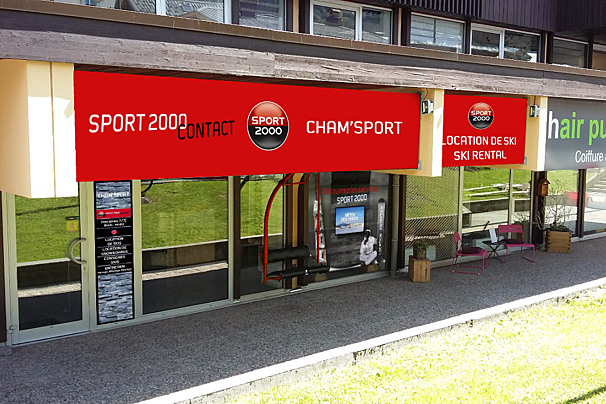
One of several Cham'sport shops, Cham'sport Mummery is located in the Mummery building, between the Folie Douce Hotel and the Alpina Hotel. Save time and money by booking all your ski and snowboard gear online, and collect easily before hitting the slopes.

Ski hire shop located at the bottom of a ski run, next to a restaurant and beside a ski lift. Save time and money by booking online with Intersport. Have your equipment ready to pick up as soon as you arrive and hit the slopes straight away!

This ski school welcomes everyone from beginners to experts in private lessons.

This ski school connects snow sports enthusiasts of all abilities with expert ski and snowboard instructors across Europe’s top resorts. With thousands of top-rated, verified instructors to choose from, their private lessons offer a flexible and personalised learning experience.
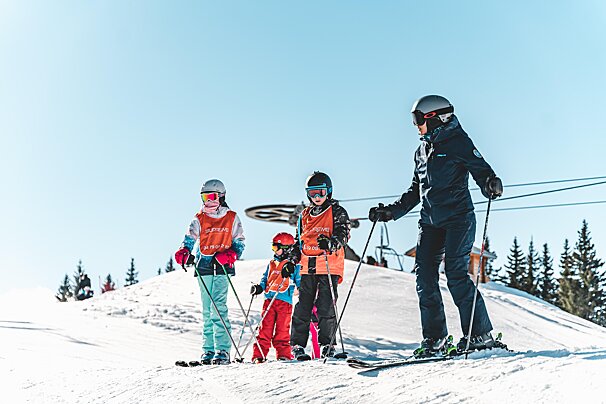
Established in 1991, this ski and snowboard school was one of the first British ski schools in France and is renowned for its fantastic instructors and excellent customer service.

Chamonix Sport Aventure is one of Chamonix's leading ski and snowboard schools offering a personalised service to maximise progress and fun in the mountains.

This ski school welcomes everyone from beginners to experts in group classes.
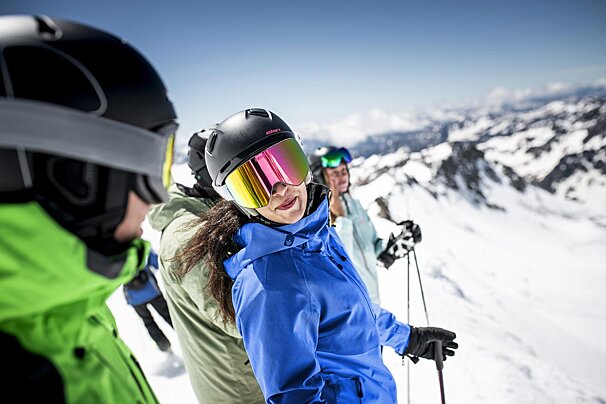
Operating across the valley, this world-class team of ski instructors is available at all meeting points in Chamonix.

Modern ski hire shop ideally located between Grands Montets ski area and Chamonix. Save time and money by booking online with Intersport. Have your equipment ready to pick up as soon as you arrive and hit the slopes straight away!

You can’t wait for your next ski trip? Everything is already booked except your ski equipment? Don’t worry, they’ll help you find the perfect equipment to fully enjoy your ski holiday in Argentière!

No need to carry your ski equipment around with you! Simply pick it up from the ski shop in resort. You can collect your equipment from at least 5pm the day before your first skiing day.

Want to rent skis or snowboards in Chamonix? Just visit the NetSki Skiloc in Chamonix!

One of several Cham'sport shops, Cham'sport Mummery is located in the Mummery building, between the Folie Douce Hotel and the Alpina Hotel. Save time and money by booking all your ski and snowboard gear online, and collect easily before hitting the slopes.

Ski hire shop located at the bottom of a ski run, next to a restaurant and beside a ski lift. Save time and money by booking online with Intersport. Have your equipment ready to pick up as soon as you arrive and hit the slopes straight away!
Find out all about what is happening in the Chamonix valley and how to make the most of your time here. The latest news, reviews of fun activities, current events and the trendiest restaurants, as well as interviews with leading locals, insider's guides and our top choices for things to do, see and experience in the valley. Plus, during the winter season, our famous snow reports and dump alerts all in the same place.
See allLatest News & ReviewsChamonix hosts a wide range of sporting events throughout the year. The biggest ones include the Mont Blanc Marathon in June and the UTMB trail running race in August. In March, the Unlimited Festival brings ravers to the mountains while Musilac Mont Blanc takes place a month later. At the end of July, the Cosmo Jazz Festival hosts concerts all around the valley.
See allUpcoming Events